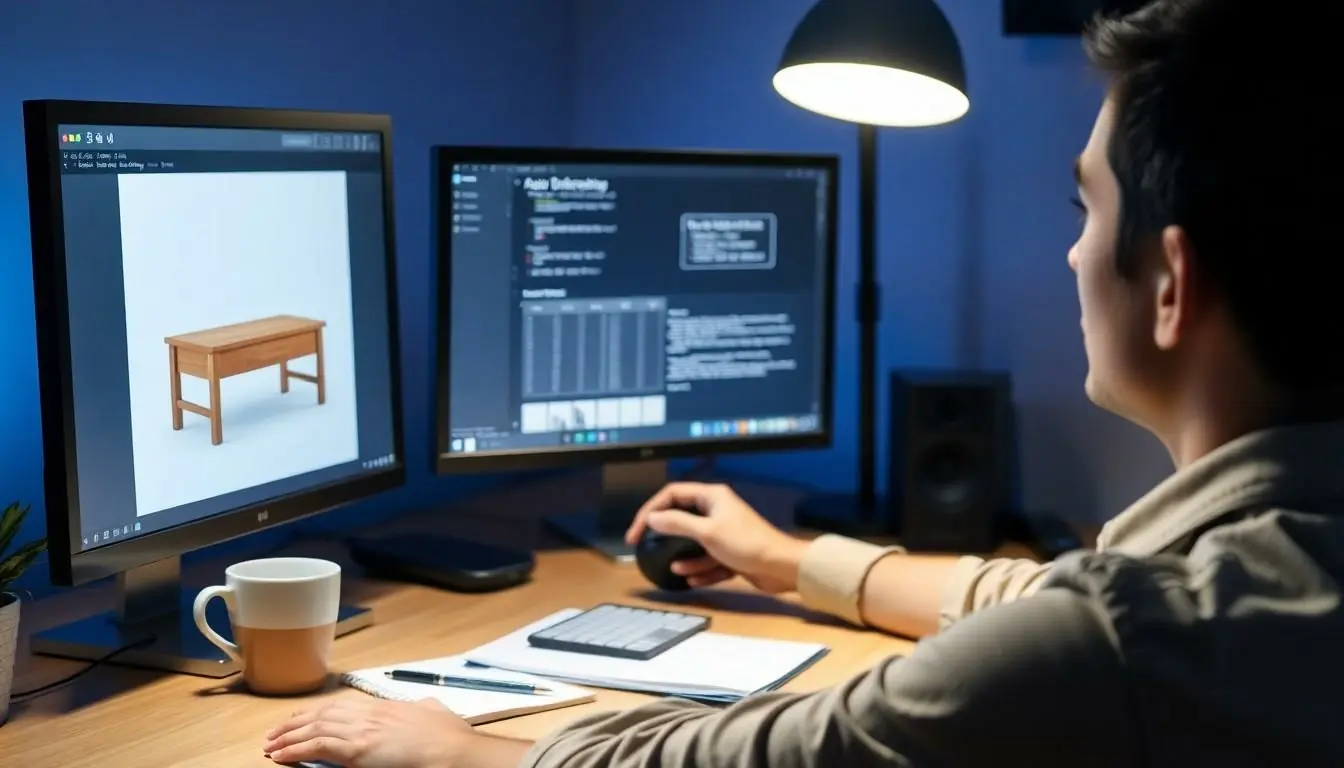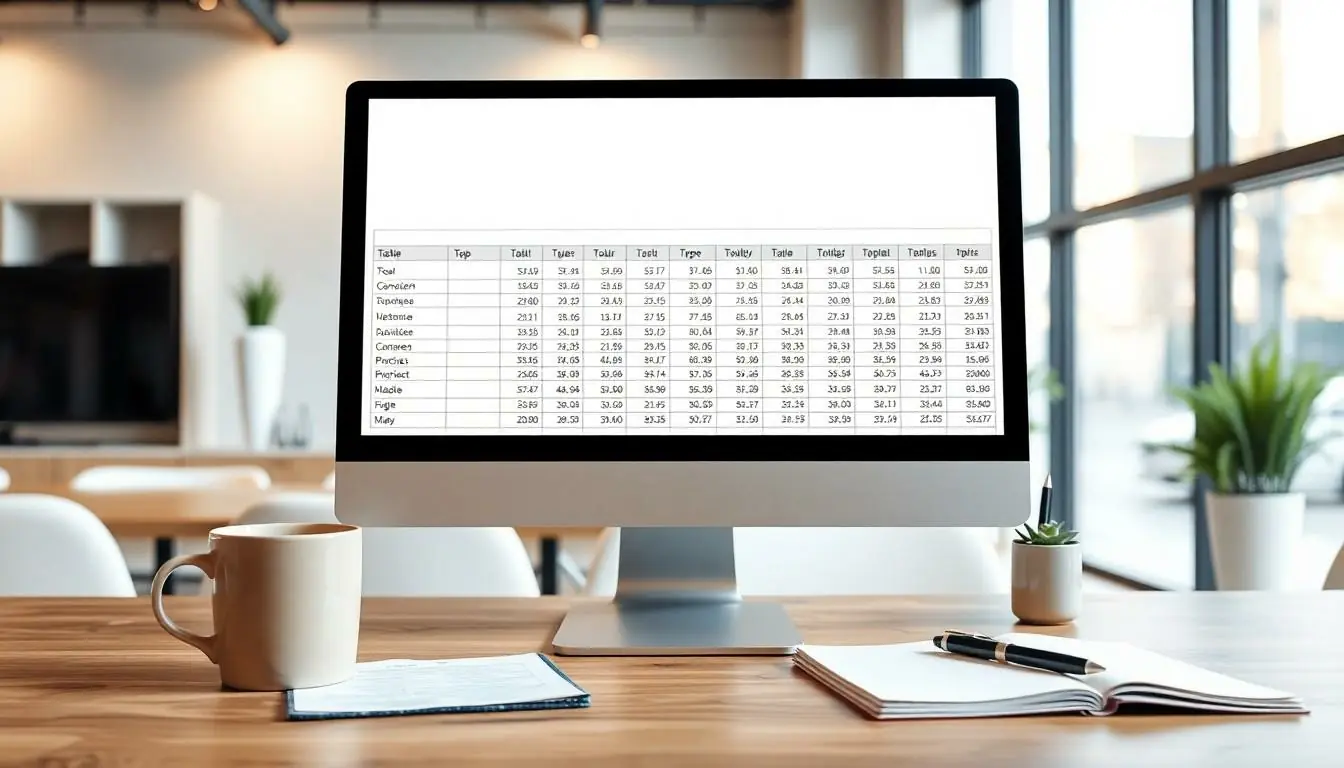Table of Contents
ToggleIn today’s digital age, sharing information efficiently can feel like trying to catch smoke with your bare hands. But fear not! If you’ve ever found yourself staring at a neatly organized table in ChatGPT, wondering how to whisk it away to your own document, you’re not alone. The good news? It’s easier than finding a cat video that’ll make you laugh.
Understanding ChatGPT Tables
ChatGPT generates tables as structured formats that present data clearly. These tables help organize information, making it easier for users to comprehend and utilize.
What Are Tables in ChatGPT?
Tables in ChatGPT consist of rows and columns that display related data points and facilitate comparisons. They offer a straightforward way to showcase statistics, lists, or other grouped information. The Markdown format used allows for easy reading and clean presentation. Users can request specific types of tables, leading to tailored data outputs that suit various needs.
Importance of Tables for Users
Tables empower users to interpret and analyze data efficiently. By providing a visual representation of complex information, tables eliminate guesswork and promote quicker understanding. Clarity is enhanced when showcasing trends, comparisons, or summaries. Furthermore, organized data facilitates better decision-making, benefiting personal projects or professional tasks. Hence, incorporating tables into interactions with ChatGPT can significantly improve the information-sharing experience.
Methods to Copy a Table from ChatGPT

Copying tables from ChatGPT involves straightforward techniques that enhance efficiency. The following methods streamline the process.
Using Standard Copy-Paste
Standard copy-paste remains the easiest way to transfer tables. Users highlight the desired table by clicking and dragging the mouse over the content. Once highlighted, right-clicking allows for the selection of the copy option. Pasting into a document uses either keyboard shortcuts, such as Ctrl + V for Windows or Command + V for Mac. This method retains basic table formatting, though adjustments might be needed afterward. Ensuring that the final document appears organized ultimately aids in readability.
Using Screenshot Techniques
Screenshot techniques offer an alternative method for capturing tables. Users can take a screenshot by pressing specific keys, like the Print Screen key or using snipping tools. After capturing the table, images can be saved and pasted into necessary applications. This method is especially useful when table formatting isn’t critical, as images provide a visual reference. Editing tools also allow for further modifications if needed, ensuring that important information stays accessible and clear.
Troubleshooting Common Issues
Encountering problems when copying tables from ChatGPT is common. Users often face challenges with formatting and text alignment.
Formatting Problems
Formatting discrepancies can disrupt the visual structure of copied tables. While some basic formatting transfers seamlessly, users might notice issues with font sizes, colors, or cell borders. To maintain uniformity, one approach involves pasting the table into a word processor that supports advanced formatting, such as Microsoft Word. Adjusting the settings or utilizing formatting tools in the application can help restore the intended appearance of the table easily. Testing different pasting options, such as “keep source formatting,” sometimes yields better results.
Text Alignment Issues
Text alignment problems frequently arise when transferring tables from ChatGPT. Cells may misalign, causing confusion when reading the data. Experimenting with alignment settings in the destination application usually resolves this issue. Users can highlight the misaligned text and apply center, left, or right alignment commands as needed. Additionally, opting for a table grid feature in the word processor may help create a uniform structure, ensuring that information remains clear and legible. Reviewing the table after pasting helps identify any lingering alignment issues that require attention.
Best Practices for Copying Tables
Copying tables from ChatGPT involves several best practices that enhance the overall experience and effectiveness.
Ensuring Readability
Focus on the font size and style when transferring tables. Clear, legible fonts contribute to better comprehension of the data presented. Adjust the layout by ensuring adequate spacing between rows and columns; this helps prevent cluttered visuals, improving reader engagement. Choose formatting options that maintain color contrast, aiding in distinguishing between various data sets. After pasting the table, review the content to confirm that all information is displayed as intended. Keeping these factors in mind promotes improved readability and enhances the utility of the table.
Maintaining Data Integrity
Data accuracy remains vital when copying tables. Double-check the figures directly after pasting to ensure that no information is lost during the transfer. Use data verification tools or features within your document application; these can help identify discrepancies. When pasting, opt for formats that preserve numerical values, such as Excel. This approach safeguards against accidental changes or omissions. Regularly saving your progress can also prevent data loss, ensuring that original content remains intact and reliable throughout the editing process.
Copying tables from ChatGPT can significantly enhance how users share and interpret data. By utilizing simple methods like copy-paste or screenshots, individuals can efficiently transfer organized information into their preferred documents.
Addressing common challenges such as formatting and text alignment ensures that the information remains clear and accessible. Adopting best practices for readability and data integrity further strengthens the overall presentation of the copied tables.
With these strategies in hand, users can confidently leverage tables from ChatGPT to improve their decision-making and communication, ultimately making their digital experience more productive and streamlined.







